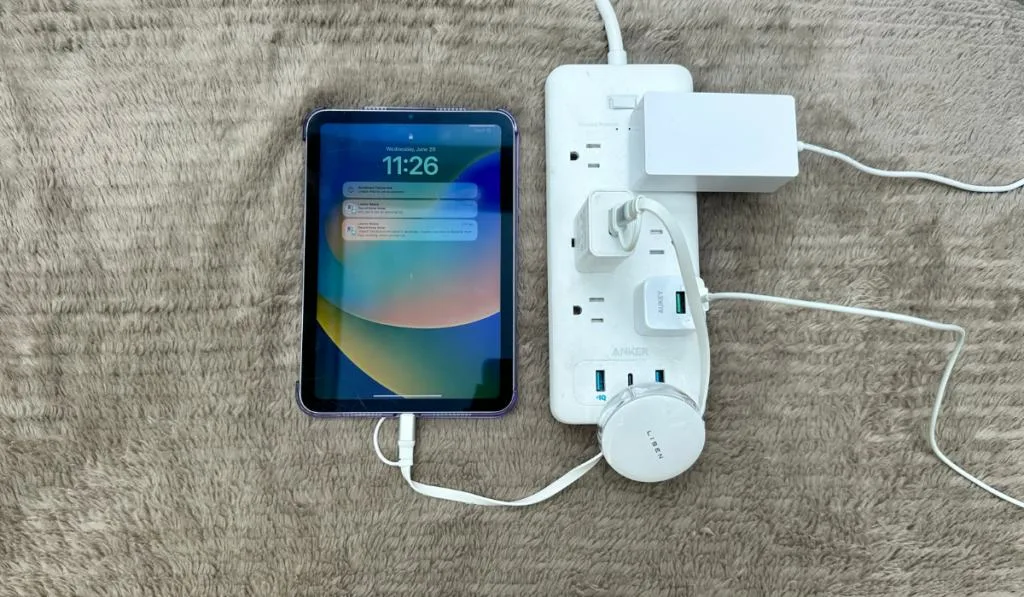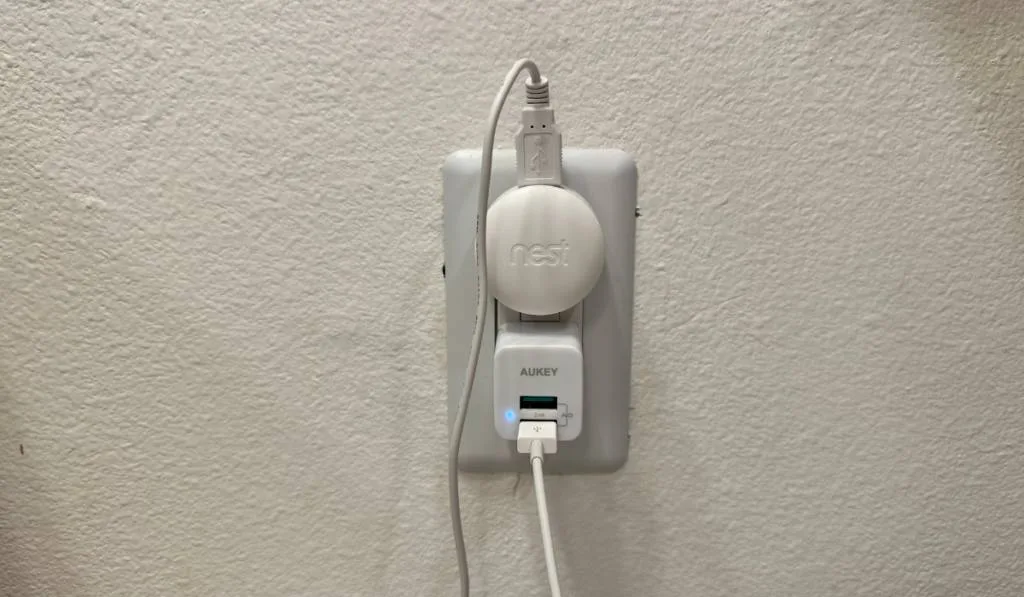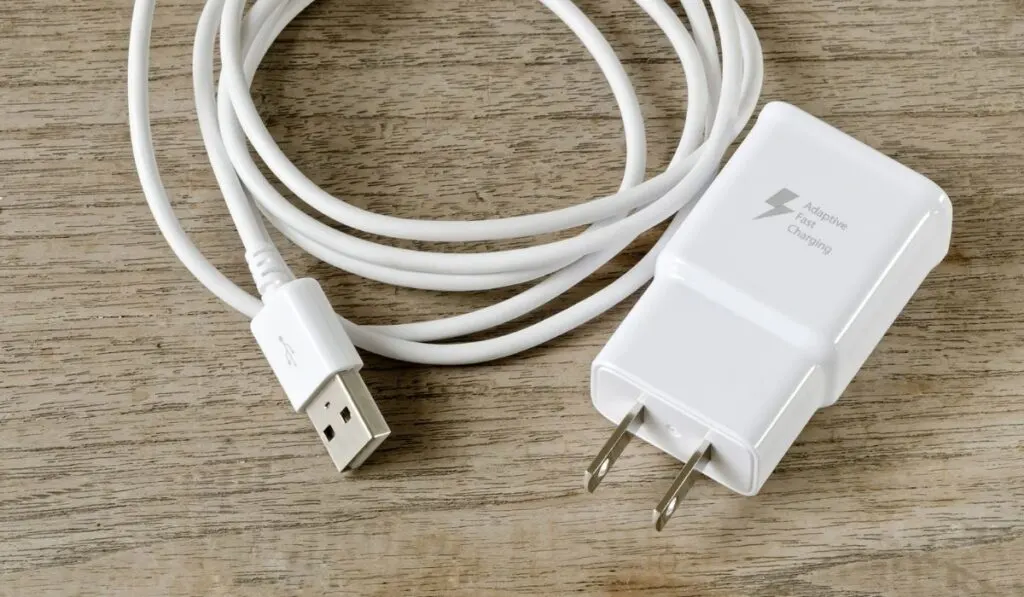We all know that running out of charge can mean disaster when you need to use a map or let someone know you’ll be a few minutes late, etc. If you’ve ever touched your charging brick after a period of fast charging a device, you’ve probably noticed how these chargers often heat up, and sometimes to an alarming degree. The question is: do you need to worry about how hot your charger gets?
USB chargers get hot while charging. Excessive heat may be due to mismatching the charger and device’s voltage, a hardware malfunction, using the wrong charger for a device, or using a device while also charging it. Some heat is expected, but if it’s too hot to hold then that is a serious problem.
To take proper care of your USB chargers, you need to know what makes them hot, what is considered abnormal heat, and how long should USB chargers last. Let’s take a look at these questions and some other related details that will help you stay on top of charging all those devices!
Why do USB Chargers Get Hot?

There is a tendency for most people to worry when they feel their chargers getting hot. If you are one of them, you generally don’t need to worry. Chargers heating up a little is perfectly normal, and there are a few reasons why this happens in the first place.
Chargers take power voltage from the wall and convert it to be fed into your device. The wall power voltage may be around 100-120 volts while the device voltage is 5 volts, so your charger has to convert and release some of this voltage which can result in heat. Fortunately, your charger has a few chips close to the plastic cover to help the heat escape.
If you think there may be a problem due to excessive heat, the first thing to do is check where the heat is concentrated. If the connected device itself is getting warm while charging, then it’s most likely that your device is the problem. If just the area where the charger is connected is getting warm, then the charger is most likely the problem.
Regardless of the charger, you are using, whether an advanced one like an Anker USB wall charger or the one that came in the box with the device, they are all bound to get a bit hot while charging.
And one related note – eagle-eye readers may notice the LISEN retractable USB cable (on Amazon) in the picture above. These handy cables have multiple ends and tech cable retracts for easy and clean storage, which is why we recommend this USB cable specifically–especially for travel! Back to the hot charger discussion now though.
Reasons Why Chargers May Get Too Hot
While we agree that it is pretty normal for a charger to heat up slightly while charging, excessive heat is definitely not normal. Look at some of the reasons below why a charger may get overly hot:
- When an electronic device malfunctions, there is a possibility of the charger or the device overheating.
- It is advisable to use the correct charger for your device. It doesn’t matter how much you spent on that replacement charger; it will probably overheat if used with the wrong device.
- The surface where you place your device while it’s charging also matters. Do not put your device on a surface that restricts airflow on the device or charger, like a cushioned surface.
- There is a tendency for your charger to overheat if it’s cheap. Mainly because cheap chargers are unlikely to have been built following proper safety precautions, or using high quality materials.
- It is also not good to use your device while charging. The device will get overworked by trying to keep up with your commands and charging at the same time, and will probably overheat.
As some smartphone users have noted (forum link), if you’re noticing this with a smartphone or device, you can try swapping out first the cable, then the charging brick, to see if either of those is causing the issue. And for whatever reasons, cars seem to be especially bad at causing this problem, with users in Honda, Jeep, and BMW forums all reporting strangely hot ports sometimes.
And generally, some heat is OK. While OEM chargers typically have more robust systems (thicker wires, larger bricks with lower-heat wattage conversion), after-market chargers are on-balance more likely to overheat. This idea is discussed in more detail here (forum).
Can Heat Damage USB Chargers?
Yes, if the heat is excessive, it could possibly damage your charger. After all, you have to remember that the heat going through your charger is from voltage currents.
Voltage currents, when they exceed the appropriate conditions for your device, can do some damage. It can destroy the device while charging or even blow up, leading to a fire.
Can a Hot USB Charger Catch Fire?
While most people will think of this as just a rare occurrence, there are situations where a hot charger can easily lead to a fire. A classic example of this will be if your charger is frayed and comes into contact with a metal surface. Metal is a great heat conductor, and when it comes into contact with a flammable source, it can easily cause a fire.
Another instance could be if you place your charging device on/in a poorly ventilated area, i.e., on a bed, under a pillow, on a couch, or in a place exposed to direct sunlight. The heat generated by the charger cannot be dissolved, so the charger will just become hotter and hotter and maybe cause a fire in the long run.
When you use a charger that does not comply with basic safety precautions, you are at risk. Most cheaper chargers do not have the necessary components to carry currents sufficient for charging. When the current is not correctly maintained, there is an increased likelihood of the charger or device overheating and the internal fusing failing.
How Hot Should a USB Charger Get?
Typically a charger should not exceed 50 degrees Celsius (122 degrees Fahrenheit). You can use an infrared thermometer (on Amazon) to measure the heat a charger is emitting, without touching the surface. This device will give you an accurate temperature reading of any gadget or charger you need to measure.
However, it probably doesn’t make sense to purchase an infrared thermometer just to check a simple cable’s temperature unless you are really worried.
Can you Leave a USB Charger Plugged In While Not Charging?

If you are using a good-quality charger, then there would be no issue with leaving the charger plugged in while it’s not charging. Most high-quality chargers will automatically stop delivering power when your device battery reaches 100%. While this may be okay, please make sure you don’t leave it somewhere where it can trip people up or be stepped on.
However, it is generally advised to remove your charger fully while not charging to protect it from power surges. Alternatively, you can use a high-quality surge suppressor or a battery backup unit alongside your charger to avoid this.
How Long do USB Chargers Last?

The lifespan of your charger depends mainly on the quality of its components/materials, and how well you treat it. You must consider that your charger also has other cords and components that will determine how long your charger lasts.
Here are a few things you can do if you want your charger to last longer:
- When used, most chargers get connected to a primary power source; this isn’t a problem unless a power surge happens. It’s best to use a surge protector in the case of any sudden voltage fluctuations.
- Water not being a good conductor of electricity means keeping your USB charger away from liquid or humidity is highly recommended. Avoid charging your devices in areas with water like kitchens, bathrooms, or near bodies of water e.g. swimming pools.
- When you want to unplug your charger, avoid yanking it out by the cord. Pulling will cause tension on the cable and eventually will cause damage.
- Chargers are not made for extreme temperatures: extreme hot or cold temperatures are likely to cause chargers to malfunction. Keep the charger away from heat and, if in extreme cold, insulate it.
- It’s recommended to keep your charger and cable stored appropriately. Firstly, do not let them somewhere where they can trip someone. But also when storing your charger, remove the cable. When the cable is left inside the charger for prolonged periods of time, it could cause internal damage.
What Causes Chargers to Stop Working?
Your charger can stop working if you use the wrong power outlet, USB cable, or the wrong electrical socket type. Most devices come with specific conditions for charging; some are so sensitive that they will only charge properly if these conditions are fully met.
Another reason could be if the charger port has an internal obstruction that makes connecting to the USB cable effectively impossible. This could be dirt, dust, or any type of debris.
Some chargers are made from cheap materials which will be of lower quality. It may not be evident at first, but over time the cable is likely to wear out, stop working, or simply break.
How to Fix a Broken Charger
Before you declare your broken charger no longer fit for use, you first need to confirm that the problem is actually with the charger. Once you know this is the case, you can look for a way to fix it. Fixing the charger yourself can save you a ton of money and is also more environmentally friendly.
One of the easiest ways to fix a broken charger is by using a heat gun and heat-shrink tubing. Make sure you purchase enough shrink tubing to cover the charger head and fit the cord. Put the shrink tube over the head and cover where the cord is broken, then shrink it appropriately using the heat gun.
You’ll need the following items to fix the cable:
This is how to fix your charger using this method:
- Choose a tubing size that will be big enough to cover your charger head. It should not cover the whole head as it may not fit appropriately while charging, leading to less than adequate charge.
- Your tubing should also cover more than just where your cord has bent or broken.
- Once you choose the best size, insert the tube and use your pliers to hold the heat shrink tubing in place.
- Set your heat gun to the lowest setting, and heat the tubing all over. After a few seconds, the tube will start to shrink.
- Make sure you shrink the tubing until you have a tight, secure fit around the head and the cord.
- Save the other pieces of heat shrink tubing to use later or to fix other broken charger cords in your home.
The above method only works when the charger cord is bent or coming apart, but it still charges. If the cord is completely broken or dysfunctional, then you may need to just buy another one.
Typically braided cables are much more durable and are less susceptible to breaking.
The USB Chargers We Recommend
Having a charger nowadays is a basic necessity; living without one makes life near impossible. It is even standard practice now to have a few extras around the house if your main one stops working suddenly.
In the case that you need to buy a new one, here are some good choices for USB chargers that we recommend. As you’ll notice, we stick to the higher end brands, where the quality of the charger is less of a question.
- Best Overall: Anker 32W 2 Port Charger (on Amazon)
- Best for Recharging a lot of devices: 90W 6-Port Desktop Charging Station (on Amazon)
- Best for Dual USB-C Ports: 40W Dual USB C Charger (on Amazon)
- Best USB-C PD Travel Charger: Anker 20W USB-C Charger (on Amazon)
- Most Powerful: Nekteck 107W 4 Port Charger (on Amazon)
